Table of Contents
- Introduction
- Historical Context and Development of Aluminum in Aerospace
- Properties of Aluminum Beneficial to Aerospace Applications
- 3.1 Physical Properties
- 3.2 Mechanical Properties
- 3.3 Chemical Properties
- Aluminum Alloys in Aerospace
- 4.1 Commonly Used Aluminum Alloys
- 4.2 Comparison of Aluminum Alloys
- Benefits of Using Aluminum in Aerospace Structures
- 5.1 Weight Reduction
- 5.2 Cost Efficiency
- 5.3 Corrosion Resistance
- Challenges and Limitations
- 6.1 Fatigue and Fracture Toughness
- 6.2 Temperature Sensitivity
- 6.3 Environmental Considerations
- Aluminum vs. Other Materials in Aerospace
- 7.1 Aluminum vs. Titanium
- 7.2 Aluminum vs. Composites
- Future Trends and Innovations in Aluminum Use
- 8.1 Advanced Aluminum Alloys
- 8.2 Hybrid Materials
- 8.3 Recycling and Sustainability
- Conclusion
- References
1. Introduction
Aluminum has played a pivotal role in the aerospace industry due to its lightweight, high-strength properties, and cost-effectiveness. Since its introduction, it has been extensively used in various aerospace components, contributing significantly to the performance and efficiency of modern aircraft. This article explores the multifaceted role of aluminum in aerospace structures, examining its properties, applications, advantages, and challenges. We will delve into the various aluminum alloys used in aerospace and compare them to other materials, highlighting future trends and innovations. This comprehensive analysis is supported by data from reputable sources and academic studies to provide an accurate and detailed understanding of aluminum’s role in aerospace.
Elka Mehr Kimiya is a leading manufacturer of aluminum rods, alloys, conductors, ingots, and wire in the northwest of Iran, equipped with cutting-edge production machinery. Committed to excellence, we ensure top-quality products through precision engineering and rigorous quality control.
2. Historical Context and Development of Aluminum in Aerospace
The use of aluminum in aerospace can be traced back to the early 20th century, a period that marked the dawn of aviation technology. The Wright brothers’ Flyer, for instance, employed a small aluminum engine, recognizing early on the metal’s lightweight advantages. During World War I, the demand for stronger yet lighter aircraft materials prompted further research and development in aluminum alloys. By World War II, aluminum had become the primary material for military aircraft, used extensively in fighter planes and bombers due to its superior strength-to-weight ratio.
The post-war era saw rapid technological advancements in commercial aviation, with aluminum playing a crucial role. The introduction of jet engines and the development of commercial airliners, such as the Boeing 707 and Douglas DC-8, relied heavily on aluminum for their structure and skin. These aircraft set the standard for modern aviation, demonstrating the metal’s versatility and reliability.
The evolution of aluminum alloys has continually expanded its applications in aerospace. Advances in metallurgy have led to the development of high-strength, corrosion-resistant alloys that further enhance aircraft performance. This historical progression highlights aluminum’s enduring significance in aerospace engineering, underscoring its vital role in the industry’s growth and technological advancements.
3. Properties of Aluminum Beneficial to Aerospace Applications
3.1 Physical Properties
Aluminum’s physical properties make it an ideal material for aerospace applications. One of its most notable features is its low density, approximately 2.70 g/cm³, which is about one-third that of steel. This low density significantly reduces the overall weight of aircraft structures, leading to increased fuel efficiency and payload capacity.
Additionally, aluminum exhibits excellent thermal conductivity, approximately 237 W/mK at room temperature. This property is beneficial in dissipating heat generated during flight, particularly in areas near engines and other heat-producing components.
Another critical physical property is its electrical conductivity, which is about 35.5 MS/m. This attribute is advantageous for certain aircraft systems that require effective electromagnetic shielding and grounding.
3.2 Mechanical Properties
Aluminum’s mechanical properties contribute to its widespread use in aerospace. It has a high strength-to-weight ratio, which is crucial for structural components that must withstand significant forces while minimizing weight. Aluminum alloys, such as 2024, 7075, and 6061, offer tensile strengths ranging from 180 MPa to over 500 MPa, depending on the alloy and temper.
Moreover, aluminum demonstrates excellent ductility, allowing it to be formed into complex shapes necessary for aerodynamics and structural design. This ductility is coupled with good malleability, facilitating the manufacturing of intricate components through processes such as extrusion, rolling, and forging.
3.3 Chemical Properties
The chemical properties of aluminum also play a crucial role in its suitability for aerospace use. Its natural formation of a protective oxide layer provides inherent corrosion resistance, which is vital for withstanding harsh environmental conditions encountered during flight. This oxide layer prevents further oxidation, ensuring long-term durability and reducing maintenance requirements.
Aluminum’s non-toxicity and resistance to UV radiation further enhance its appeal in aerospace applications, where material stability and safety are paramount. These properties ensure that aluminum maintains its structural integrity and appearance over extended periods, even in demanding environments.
✅ Also Read : Aluminum in Aerospace: Building the Future of Flight4. Aluminum Alloys in Aerospace
4.1 Commonly Used Aluminum Alloys
The aerospace industry utilizes a variety of aluminum alloys, each tailored for specific applications based on their mechanical and chemical properties. Some of the most commonly used aluminum alloys include:
- 2024 Aluminum Alloy: Known for its high strength and excellent fatigue resistance, this alloy is frequently used in wing and fuselage structures. It contains copper as its primary alloying element, enhancing its strength characteristics.
- 6061 Aluminum Alloy: Valued for its versatility, corrosion resistance, and good machinability, 6061 is often used in structural applications and aircraft fittings. It contains magnesium and silicon, making it heat-treatable and weldable.
- 7075 Aluminum Alloy: This high-strength alloy is renowned for its exceptional strength-to-weight ratio, making it ideal for critical structural components. Its primary alloying element is zinc, with additions of magnesium and copper for improved strength.
- 7050 Aluminum Alloy: Developed for high-stress applications, 7050 offers superior toughness and resistance to stress corrosion cracking. It is often used in the manufacture of aircraft spars and bulkheads.
4.2 Comparison of Aluminum Alloys
The following table provides a comparison of some commonly used aluminum alloys in aerospace, highlighting their key properties and applications:
| Alloy | Density (g/cm³) | Tensile Strength (MPa) | Yield Strength (MPa) | Key Features | Applications |
|---|---|---|---|---|---|
| 2024 | 2.78 | 470 – 480 | 325 – 345 | High strength, fatigue resistance | Wing and fuselage structures |
| 6061 | 2.70 | 240 – 310 | 145 – 275 | Versatility, corrosion resistance, machinability | Structural components, aircraft fittings |
| 7075 | 2.81 | 540 – 590 | 470 – 505 | Exceptional strength-to-weight ratio | Critical structural components |
| 7050 | 2.83 | 460 – 520 | 370 – 460 | Superior toughness, stress corrosion cracking resistance | Aircraft spars, bulkheads |
This comparison illustrates the diverse range of aluminum alloys available for aerospace applications, each offering unique advantages that cater to specific requirements.
5. Benefits of Using Aluminum in Aerospace Structures
5.1 Weight Reduction
One of the primary advantages of using aluminum in aerospace is its ability to significantly reduce weight. The low density of aluminum compared to other metals like steel leads to lighter aircraft structures, which in turn results in improved fuel efficiency and increased payload capacity. This weight reduction is critical for enhancing overall aircraft performance and reducing operational costs.
5.2 Cost Efficiency
Aluminum’s cost-effectiveness is another significant benefit for the aerospace industry. Its relatively low cost compared to other high-performance materials, such as titanium and advanced composites, makes it an attractive choice for manufacturers. The ease of machining and forming aluminum also contributes to lower production costs, allowing for more affordable aircraft production and maintenance.
5.3 Corrosion Resistance
Aluminum’s natural corrosion resistance is a crucial factor in its widespread use in aerospace. The formation of a protective oxide layer prevents further oxidation, ensuring long-term durability and reducing maintenance requirements. This corrosion resistance is particularly important in aerospace applications, where exposure to harsh environmental conditions is common.
🔔 Also Read : In-Depth Analysis of 2000 Series Aluminum Alloys: Composition, Properties, Processing, and Applications6. Challenges and Limitations
6.1 Fatigue and Fracture Toughness
Despite its many advantages, aluminum does have limitations, particularly in terms of fatigue and fracture toughness. Repeated loading and unloading cycles can lead to fatigue failure in aluminum components, posing challenges for long-term durability. While advances in alloy development have improved these properties, ongoing research aims to enhance aluminum’s fatigue resistance further.
6.2 Temperature Sensitivity
Aluminum’s mechanical properties can be affected by temperature fluctuations, especially at high temperatures. Its strength decreases at elevated temperatures, which can limit its use in certain high-heat applications. However, advancements in alloy development have mitigated some of these limitations, allowing for improved performance in a broader range of temperatures.
6.3 Environmental Considerations
Environmental considerations, such as energy consumption during production and recycling, are becoming increasingly important in aerospace material selection. While aluminum is highly recyclable, the energy-intensive nature of its production process raises concerns about its environmental impact. Efforts are underway to improve the sustainability of aluminum production and recycling processes to address these challenges.
7. Aluminum vs. Other Materials in Aerospace
7.1 Aluminum vs. Titanium
Titanium is another material commonly used in aerospace applications, known for its high strength and corrosion resistance. However, titanium is significantly denser and more expensive than aluminum. While it offers superior performance in high-temperature and high-stress applications, aluminum remains the preferred choice for many structural components due to its cost-effectiveness and weight advantages.
7.2 Aluminum vs. Composites
Composite materials, such as carbon fiber reinforced polymers (CFRP), have gained popularity in aerospace for their exceptional strength-to-weight ratios. While composites offer significant weight savings, they are more expensive and challenging to repair than aluminum. Aluminum’s ease of manufacturing and established supply chain make it a more practical choice for many aerospace applications, particularly in areas where cost and repairability are critical factors.
8. Future Trends and Innovations in Aluminum Use
8.1 Advanced Aluminum Alloys
The development of advanced aluminum alloys continues to expand the material’s capabilities in aerospace. These new alloys offer enhanced mechanical properties, corrosion resistance, and temperature performance, allowing for more efficient and durable aircraft structures. Innovations in alloy design are focused on optimizing the balance between strength, weight, and cost, enabling aluminum to meet evolving aerospace demands.
8.2 Hybrid Materials
Hybrid materials, combining aluminum with other materials such as composites or titanium, are emerging as a promising trend in aerospace. These hybrid structures aim to leverage the strengths of each material, offering improved performance and weight savings. Research into hybrid materials is ongoing, with the goal of creating more efficient and cost-effective aerospace solutions.
8.3 Recycling and Sustainability
As environmental concerns become increasingly important, the aerospace industry is focusing on improving the sustainability of aluminum use. Efforts to enhance recycling processes and reduce energy consumption during production are underway, with the aim of minimizing aluminum’s environmental footprint. These initiatives are crucial for ensuring aluminum’s continued relevance in a more environmentally conscious aerospace industry.
9. Conclusion
Aluminum’s role in lightweight aerospace structures is indispensable, offering a unique combination of properties that enhance aircraft performance and efficiency. Its historical significance and continued innovation underscore its importance in the aerospace industry. Despite challenges such as fatigue and environmental considerations, ongoing research and development are paving the way for new aluminum applications and advancements. As the industry evolves, aluminum will remain a key material in shaping the future of aerospace technology.
10. References
- Dursun, T., & Soutis, C. (2014). Recent developments in advanced aircraft aluminum alloys. Materials & Design, 56, 862-871.
- Hatch, J. E. (Ed.). (1984). Aluminum: Properties and physical metallurgy. ASM International.
- Davis, J. R. (Ed.). (1999). Corrosion of aluminum and aluminum alloys. ASM International.
- Starke, E. A., & Staley, J. T. (1996). Application of modern aluminum alloys to aircraft. Progress in Aerospace Sciences, 32(2-3), 131-172.
- Polmear, I. J. (2005). Light alloys: From traditional alloys to nanocrystals. Elsevier.
- Miller, W. S., Zhuang, L., Bottema, J., Wittebrood, A. J., de Smet, P., Haszler, A., & Vieregge, A. (2000). Recent development in aluminum alloys for the automotive industry. Materials Science and Engineering: A, 280(1), 37-49.
- Kaufman, J. G. (2000). Introduction to aluminum alloys and tempers. ASM International.
- Pickens, J. R., & Yang, P. Y. (2005). Alloy development for structural applications. In Kaufman, J. G. (Ed.), Properties of aluminum alloys: Tensile, creep, and fatigue data at high and low temperatures (pp. 30-55). ASM International.
- Buckley, J. D., & Edie, D. D. (1993). Carbon-carbon materials and composites. Noyes Publications.
- Behrens, B.-A., & Voges, F. (2016). High-performance light metals. Procedia CIRP, 50, 81-86.


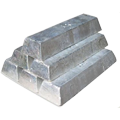
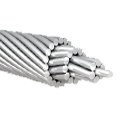
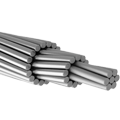
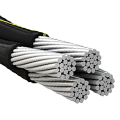
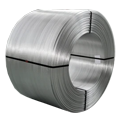
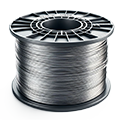







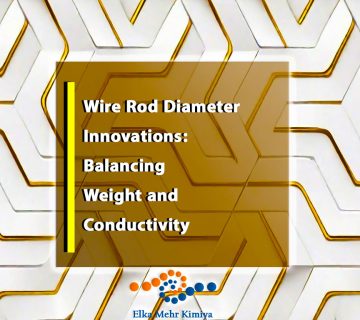
No comment